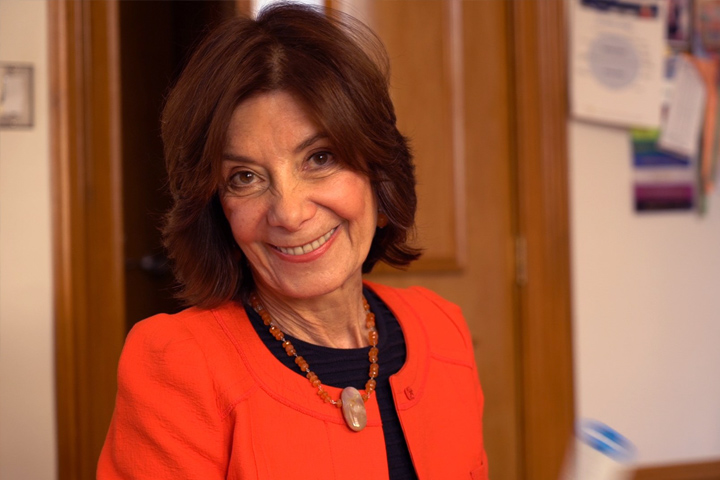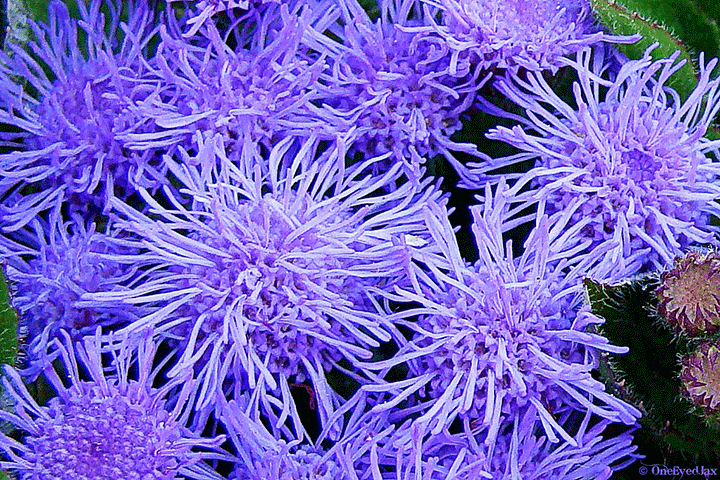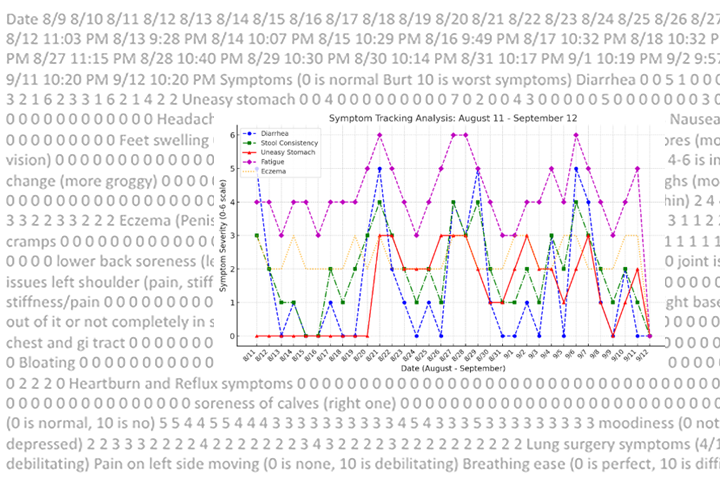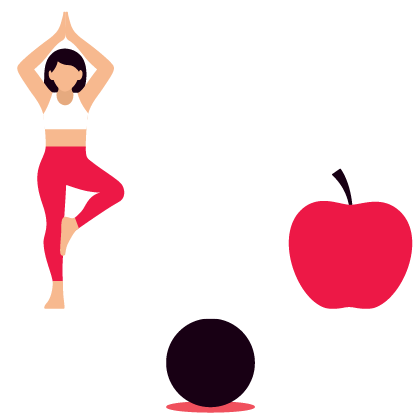Reimagining the Possible to Survive Stage IV Pancreatic Cancer

- Given a poor prognosis after being diagnosed with stage IV pancreatic cancer
- Focused on positivity, and people who defied the odds
- Found a doctor who combined chemotherapy and complementary treatments
- Now a long-term survivor helping others
This spring—2018—is 20 years since I was diagnosed with pancreatic cancer.
I had a long history of gastrointestinal problems, so any time I had stomach aches and back aches, I figured it was just my sensitive GI tract. Also I felt that my priorities were work, family, and training for a marathon. Because of my history, I didn’t pay attention to the symptoms.
But after a horseback riding accident I noticed a hard swelling in my groin. I went to my internist, who said it was an enlarged lymph node caused by my accident. However, when my gynecologist saw the swelling during a routine examination, she thought this needed immediate attention, and sent me to a surgeon. He suspected it was cancer, and immediately scheduled me for surgery.
After some tests, the oncologist sat down with my husband and me and said I had stage IV pancreatic cancer. I didn’t know where my pancreas was but I soon found out what stage IV meant. My husband asked what this meant in terms of my life span and the oncologist said I had six months, maybe nine if I was lucky. I said “There must be something that can be done—chemotherapy, surgery.” But the doctor said I was medically incurable and medically untreatable.
I was shocked. I felt like an outcast in my own world, like a sheet of glass came down in front of me, and I was exiled from everything I knew.
Changing How I Thought
Had that doctor said “Let’s try chemotherapy” I would have done it and looked no further. But I was told nothing could be done. Being told nothing can be done was life-changing for me.
I took a leave from my job and started researching. But the negativity increased when I went to a bookstore and looked up pancreatic cancer. Remember, the statistics were worse 20 years ago than they are today. I slammed the book shut and decided I was never going to read anything negative about pancreatic cancer or stage IV cancers of any type.
I had spent most of my lifetime asking the question “Why do some people manage or navigate more successfully through the worst circumstances—what do they bring to those situations?” I decided to put into practice those characteristics, to do what I could to live happier and if possible longer. In the first shock of the prognosis, I asked “How can I have the best death?” Soon after, I turned my attention to those people who live longer than the odds or even survive. The hundreds of articles and research studies became the basis of my healing program.
With years of experience of hiring at all levels in a corporation, I never would have hired someone who believed that we would fail. So the first step for me was to find a brilliant, impeccably trained oncologist who believed in the possibility that I could get well again. Also, I realized that positivity was key for both the quality and quantity of my life, so I decided to be the CEO of my own healing program. I needed a team of experts, headed up by that oncologist, but one who understood that many factors contribute to getting well and staying well. I went from doctor to doctor asking the question, “Who do you know that would work with me to get better?” I asked and asked, until I got an answer.
Finding the Right Oncologist
Finally, I was referred to Dr. Mitchell Gaynor*, who practiced integrative oncology. He believed that medicine alone was not sufficient, and that patients needed to include changes on the physical, mental, emotional, and spiritual realms. When I met with him, Dr. Gaynor said there was so much I could do. He also said whether or not I chose him for my treatment I should come to his support group. I was astounded that he ran his own support group, which included chanting and Tibetan bowls. I was reluctant to go to the first meeting because I was scared to be around people who would be talking about pain and dying. At his group I met people who were exercising, even running, while in stage IV. Meeting Dr. Gaynor’s patients, who were so filled with life, led me to choose him as my oncologist. The quality of their experience was a very important factor in my decision.
Because of an extensive family history of cancer—my mother, father, sisters, uncles, and both grandmothers had died of cancer—Dr. Gaynor suggested genetic testing. In fact, he was the first doctor to suggest this to me. He sent me for a biopsy, and I found out that I carried the BRCA2 gene.
I didn’t start chemotherapy right away—the other oncologists I had seen were adamant that chemotherapy would at most give me a couple of extra months, and leave me sick as a dog! I told him that I wanted to try his non-medical interventions first. He agreed, realizing that I was not going to be persuaded at this time.
Dr. Gaynor changed my diet, put me on supplements and some prescription medications, recommended a trainer to teach me exercises to complement my running, and recommended a cancer therapist to deal with fears around my diagnosis and unresolved trauma from the past. My tumor markers dropped, and I was physically, mentally, and emotionally feeling better, but the CT scans showed no improvement. He persuaded me to do chemotherapy, saying that he felt that without it the cancer would spread to my brain. In truth, he scared me into doing it. He put me on a regimen of carboplatin, Taxol, and Taxotere. I had chemotherapy for seven months. He prescribed supplements and drugs to bolster my immune system, to alleviate some of the side effects and to destroy cancer cells.
Once I made the decision to undergo chemo, I decided I was going to have fun in the chemo room and was going to celebrate being there. Instead of seeing the chemo as toxic, I saw it as a gift from dedicated scientists. I made wonderful friends among patients and nurses. I lost my hair, which was tough, because I believed it was my best physical feature. This unusual oncologist shared with me that sometimes we have to lose what we think is most important to us to realize who we truly are. Wigs made me itch, so I wore the cutest hats that hid nothing, realized I wouldn’t have another bad hair day, and, in some odd way felt more beautiful than I ever had before.
I continued eating foods that are good for the body, and taking supplements that strengthened my immune system. I underwent acupuncture to minimize or eradicate the side effects such as nausea and neuropathy. It took a while for the treatments to show results but I was feeling positive. I was also loving my life—going to the rehearsals of the Philharmonic—up-leveling my relationships with my family, colleagues, and even strangers!
After treatment ended I had regular follow-ups. I had CT scans every eight weeks for 10 years, but Dr. Gaynor realized I was getting a lot of radiation so we switched to MRIs. I also had blood work every three months for tumor markers. Years later, because of continuing concerns about other cancers, I had genetic testing for a second time. This time the test was done at a bigger lab, and I found out that I carried the BRCA1 mutation.
Now I see my oncologist every six months for various scans and I have blood work every four months. I have a team of doctors at NYU Langone Health that works together proactively.
The Power Within
Once I started changing my diet and doing the other things Dr. Gaynor recommended, I felt empowered and confident. I was focusing on my quality of life, not just the quantity of life. I was not willing to hear negativity from anyone. I took charge of my life.
I immersed myself in getting well. I focused on making up a great life by the years, the months, the weeks, the days. I decided that if I recovered I would never have another unhappy day. Later I realized that in some ways the hardest work in the world is to think and act in a way that is congruent with what we would really love to think, feel and do. It is so normal to react negatively to challenges. But I got better and better at deciding I could create a great life. I deepened my spiritual connections with my husband and my religion. And I continued to focus on the positivity. This process of thinking, feeling, and acting in a way that supports what we most want is a lifelong commitment.
A Positive Life
The minute I started feeling more hopeful I started sharing my experience with anyone facing a life-ending diagnosis. I have become a certified master integrative coach, a cancer coach, and certified in mind-body medicine, and a resilience practitioner. These steps and more were to help guide and serve people going through what may seem like hopeless odds. I have found that serving others is one of the most uplifting things we can do.
It is important to educate the medical community to use everyday terms so we can understand. And we must ask questions when we don’t understand. Even more important, we can remind the medical community of the essential power of our minds to impact the qualitative experience and the quantitative experience. I advise patients to choose doctors and healing professionals that have a positive attitude, that see patients as partners in the process of healing, and that share information with each other so that they can best serve the whole person.
The most important advice is don’t try to do this alone. Know that healing from cancer requires you to really heal every part of your life. Be part of a support group—real or online—get a coach, and ask for help and give help while navigating through treatment and after.
*Dr. Gaynor passed away in 2015.
Marisa tells her story in “Reimagining the Possible: A 20-year Survivor of Pancreatic Cancer,” part of the Survivor Video series.





